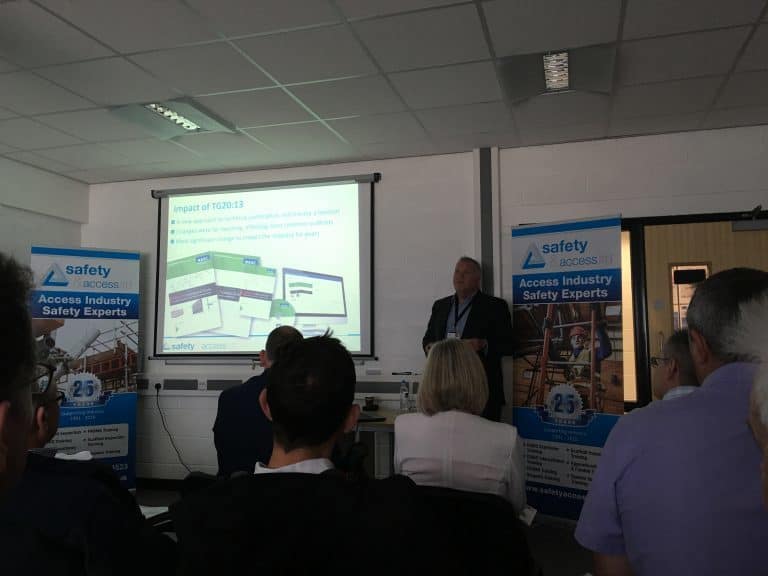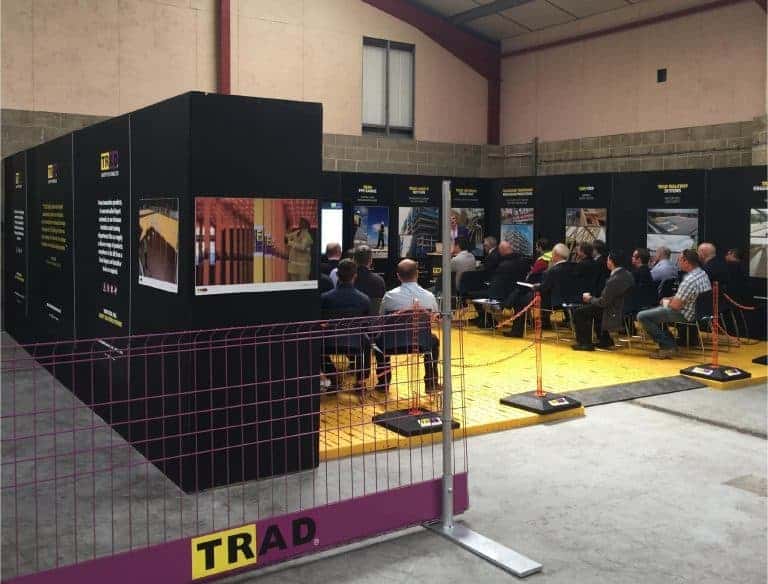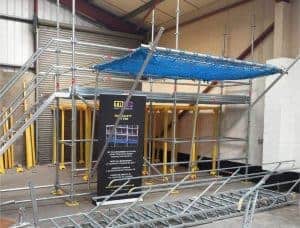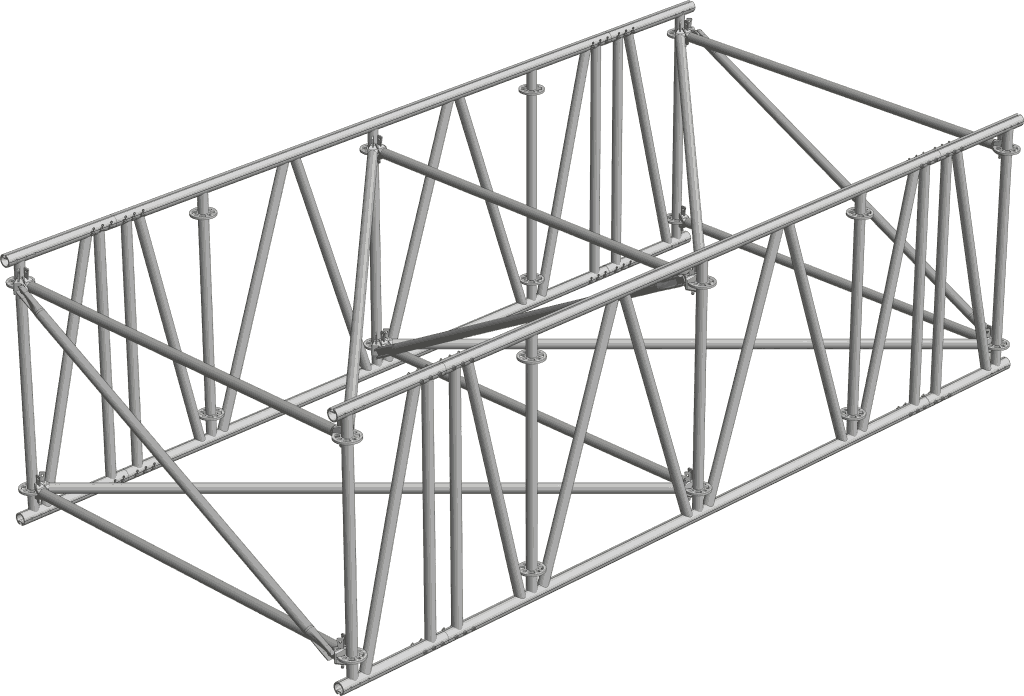Safety & Access Ltd celebrate 25 years of supporting our industry with a successful open day.
One of the leading scaffolding and working at height training providers Safety & Access Ltd have celebrated their 25th anniversary with a open day at the company’s Humber Training facility at CATCH, Stallingbrough.

Furthermore Willmott Dixon which are one of the largest principal contractors in the UK delivered their view on the continued high standards of training within the UK scaffolding and access industry.
25 Years Supporting Our Industry
During the open day joint Managing Directors, Ray Johnson and Rick Statham of Safety & Access took us on a journey back through time to the beginning when the company was formed as Scaffold Inspection Services (SIS) Ltd in 1991, to provide an independent scaffold inspection service to their clients nationwide.
The invitees heard that the Company was a joint venture between the UK and International Scaffolding Company SGB and Hinton & Higgs Ltd which was at the time Europe’s largest Construction Health and Safety Consultancy. Their range of services soon expanded to include Scaffold Inspection training, the Construction Industry Scaffolders Record Scheme (CISRS) range of skill training, scaffolding consultancy advice and PASMA lightweight aluminium tower scaffolding training.
In late 1997 the directors undertook a management buyout of the Company that was then re-named Safety and Access Ltd in 1998.
The Company continued to expand its specialised working at height training and consultancy services to all industries including Construction, local and National Government, Petrochemical, Power Industry, Offshore, Entertainment, Utilities, Education, Property and Facilities Management.
As part of its own commitment to Health and Safety the company developed its own Health and Safety Management system in line with BH OHSAS 18001 and in March 2001 was successfully externally audited to this standard by NQA. Following on from this the Company started to offer a full Health and Safety Consultancy retained service to scaffolding and other clients and their organisations. In 2010 the company added ISO 9001 to its many accreditations and continues with a quality approach to its business and support services.
In January 2004 Safety and Access Ltd, in response to increasing demand from clients existing and new, opened a dedicated Management Training Facility at its Nottingham head office and training centre with an extended capacity of up to 40 attendees.
Safety and Access Ltd continues to grow and expand its services to all industries and in mid-2012 they opened an additional fully accredited training facility in the Humber region in Stallingborough offering CISRS and PASMA accreditation for work at height and scaffolding related training.
In 2013 the Company further expanded its international training portfolio by opening CISRS facilities for international accreditation in UAE, Qatar, and South Korea. Further international expansion plans are in place for other regions.
Today Safety & Access Ltd are regarded as one of the leading scaffolding and work at height training providers and consultancy services specialising in the UK and International markets. The company can include some of the largest UK and International businesses amongst its client base.








 CPD is an issue which has been discussed at length within the
sector for over 10 years. Following correspondence with the HSE in 2015 urging CISRS to introduce CPD, as the scheme had been in existence for over 40 years without a formal route, it was agreed that the introduction of CPD would ensure that cardholders were kept up to date with the latest legislation and industry guidance.
“We are aware that good employers strive to keep their workforce up to speed with changes within the industry, but this is not always the case. With a transient workforce and no formal programme for achieving this we cannot be sure exactly what information has been passed onto whom.
“The basic principle of CPD and/or refresher training is a good one. However, we are all too aware that this comes at a cost not only for the training itself, but also loss of production etc. As such we are looking to ensure that the course provides the most gain for the least pain and offers the scaffolder and their employer some real value added training,” said Dave Mosley, CISRS Scheme Manager.
CPD has been a regular agenda item at Access and Scaffolding Industry Training Organisation (ASITO) meetings, and a working party of CISRS representatives, scaffolding contractors and training providers was formed to take this forward.
Mike Burr, Managing Director of LTC Group 87 and a member of the CPD working party said: “The introduction of CPD for CISRS card holders will be another much needed step forward within our ever progressing industry and will receive my full support in my role as ASITO Chairman. As both an employer and training provider to the scaffold industry we welcome the introduction of CPD to further underpin what is already an excellent nationally recognised scheme.”
The working group began to put together a “wish list” of topics which they felt should be included within a CPD course aiming to focus on essential areas.
Full details will be confirmed later in the year, but it is proposed that CISRS CPD Course Content will cover:
CPD is an issue which has been discussed at length within the
sector for over 10 years. Following correspondence with the HSE in 2015 urging CISRS to introduce CPD, as the scheme had been in existence for over 40 years without a formal route, it was agreed that the introduction of CPD would ensure that cardholders were kept up to date with the latest legislation and industry guidance.
“We are aware that good employers strive to keep their workforce up to speed with changes within the industry, but this is not always the case. With a transient workforce and no formal programme for achieving this we cannot be sure exactly what information has been passed onto whom.
“The basic principle of CPD and/or refresher training is a good one. However, we are all too aware that this comes at a cost not only for the training itself, but also loss of production etc. As such we are looking to ensure that the course provides the most gain for the least pain and offers the scaffolder and their employer some real value added training,” said Dave Mosley, CISRS Scheme Manager.
CPD has been a regular agenda item at Access and Scaffolding Industry Training Organisation (ASITO) meetings, and a working party of CISRS representatives, scaffolding contractors and training providers was formed to take this forward.
Mike Burr, Managing Director of LTC Group 87 and a member of the CPD working party said: “The introduction of CPD for CISRS card holders will be another much needed step forward within our ever progressing industry and will receive my full support in my role as ASITO Chairman. As both an employer and training provider to the scaffold industry we welcome the introduction of CPD to further underpin what is already an excellent nationally recognised scheme.”
The working group began to put together a “wish list” of topics which they felt should be included within a CPD course aiming to focus on essential areas.
Full details will be confirmed later in the year, but it is proposed that CISRS CPD Course Content will cover:







 An exhibition is being held alongside the installation, reimagining how other buildings in the city can accommodate rooftop activities.
“With this installation and in our exhibition we show what this city could look like if we do that in many places, engaging a series of our existing buildings and giving access to their roofs, to create a new, much more interactive, three dimensional and denser urban topography for the next city generation,” added Maas.
An exhibition is being held alongside the installation, reimagining how other buildings in the city can accommodate rooftop activities.
“With this installation and in our exhibition we show what this city could look like if we do that in many places, engaging a series of our existing buildings and giving access to their roofs, to create a new, much more interactive, three dimensional and denser urban topography for the next city generation,” added Maas. 
